Would you like to know how to release freon from your car's air conditioner? Well, we have researched this topic and have the answer for you. Understanding how to properly remove freon from your car's air conditioner is vital to avoid serious injury.
Attach an air conditioner recharge hose to your AC's low-side service port to release freon from your car's air conditioner. Wrap the end of the recharge hose with a washcloth and open the release valve until the pressure measures green. Make sure you are wearing gloves and safety glasses.
This article will teach us how to release freon from your car's air conditioner. We will also learn the answers to other interesting related questions, such as how you add freon to your car's air conditioner and how you make your car's air conditioner blow harder. Keep reading to learn more.
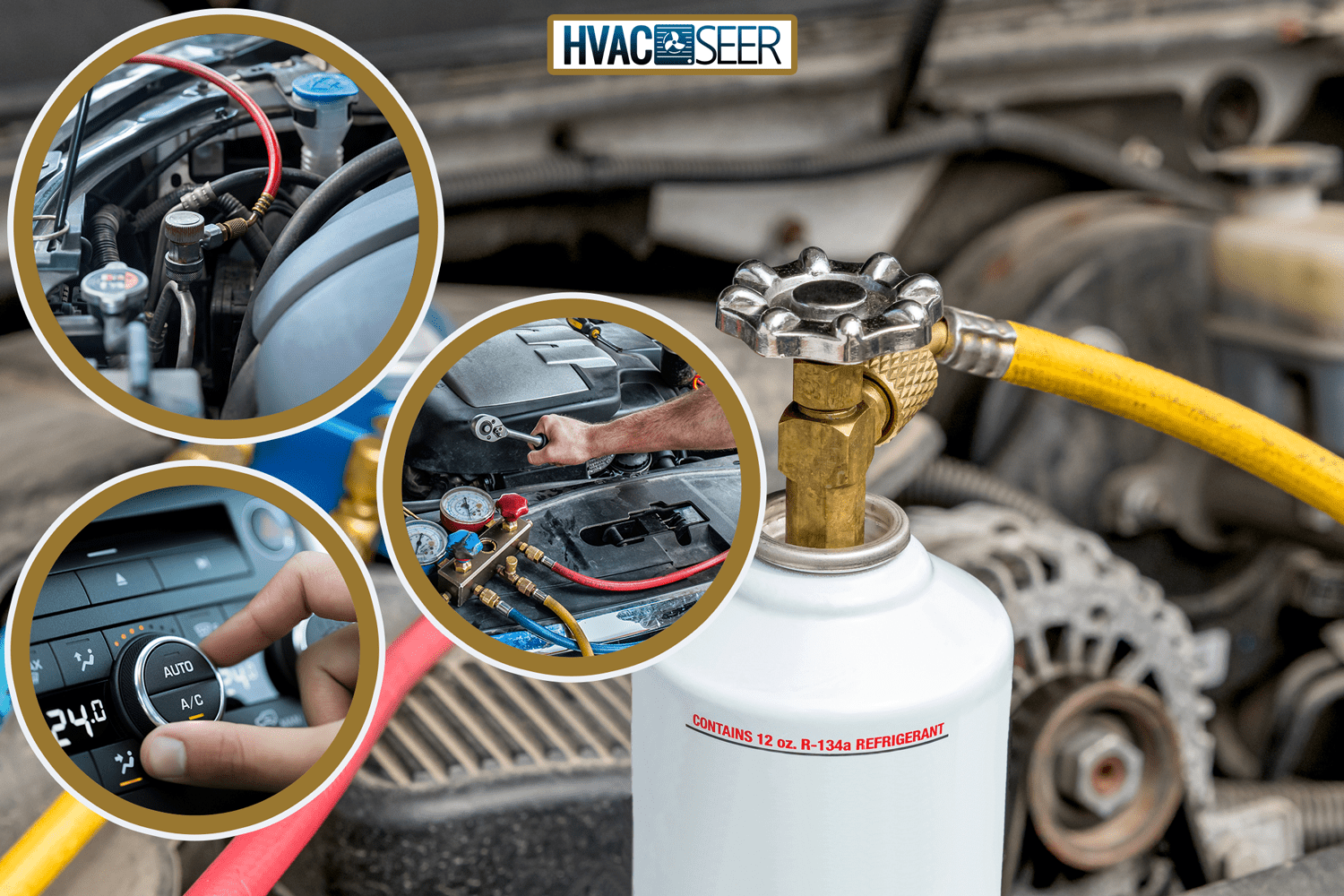
How To Release Freon From Car Air Conditioner
If you notice that your car's air conditioner stops working when it gets hot, it may be that it's overcharged. When it gets hot, your car's air conditioner has to work harder, and if there's too much freon in the system, it won't work correctly. The solution is to release some freon until your car's air conditioner is at the proper pressure to function.
When releasing freon from your car's air conditioner, you must have the proper tools and safety equipment. To remove freon, you will need an AC recharge hose and a washcloth, and you will also need gloves and safety glasses.
The freon that comes from your car's air conditioning will be subzero temperatures and can cause frostbite on your hands and blindness if it gets in your eyes.
If you need an AC recharge hose, here are two of the best ones on Amazon.
Aupoko AC Recharge Hose
You can find this product here on Amazon.
BACOENG AC Recharge Hose
You can find this product here on Amazon.
Take your AC recharge hose and attach it to your AC's low-side service port. Low-side refers to the pressure level of the AC system and not its physical location on your car. If you are unsure which service port is the low-side port, refer to your vehicle's service manual.
Now, turn on your vehicle and turn the air conditioning to full blast. Make sure that the AC is on its coldest setting.
Next, wrap the end of the AC recharge hose with a washcloth leaving a small opening in the cloth to allow freon to escape. Open the valve on the end of your AC recharge hose to allow the freon to vent for a few seconds, and then close the valve.
Check if the AC recharge hose measures in the green zone. If there is too much pressure, you will need to vent more freon. Once you reach the correct pressure, turn off your vehicle's engine and disconnect the AC recharge hose.
You will know if you were successful if your air conditioning now blows cold air.
How Do You Add Freon To Your Car's Air Conditioner?
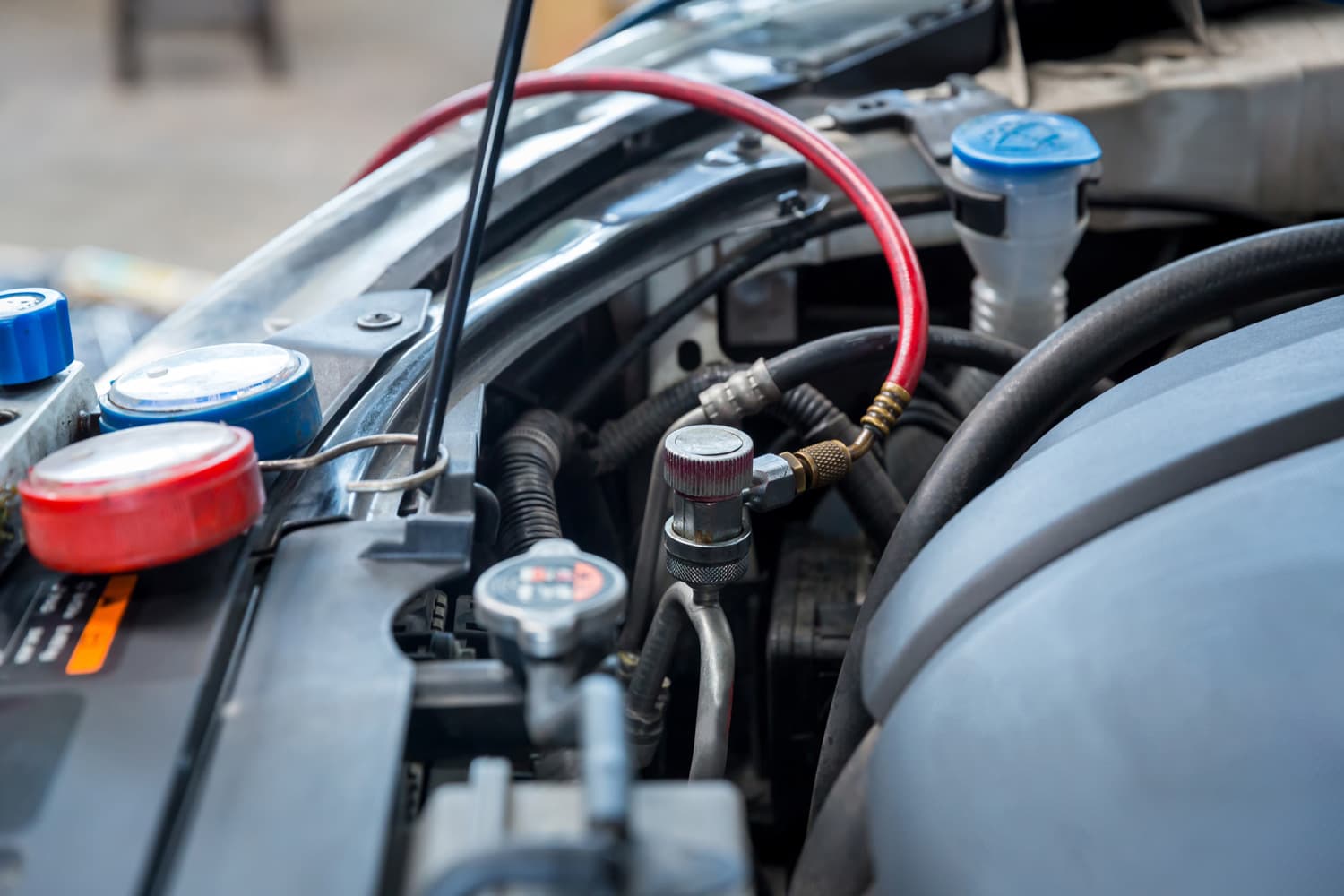
There are two ways to add freon to your car's air conditioner. You can use a can of refrigerant, or you can use an AC manifold gauge. Let's learn how to use a can of refrigerant first and then discuss how to use an AC manifold gauge.
Can Of Refrigerant
Cans of refrigerant can be found at nearly all automotive supply stores. To use a can of refrigerant, locate your AC's low-side service port and attach the can of refrigerant's connection hose. With the air conditioning on, press the can's button to add freon until you notice the car's air conditioning is cold.
It's essential only to add enough to make your AC cold, so you may want someone to help tell you when the AC is working. If you add too much refrigerant, your AC will start blowing warm air. Overcharging your car's AC prevents it from functioning correctly and can even damage it.
Some cans of refrigerants have gauges to help ensure the correct pressure, but all cans of refrigerants have a big problem. The hose that attaches from the can of refrigerant to the low-side service port contains air that has moisture. If even a tiny amount of water enters your vehicle's AC system, it can corrode and damage it.
There is another method for adding freon to your car's AC, but it requires more equipment. Let's look at this other method and learn the best way to add freon to your car's AC.
AC Manifold Gauge
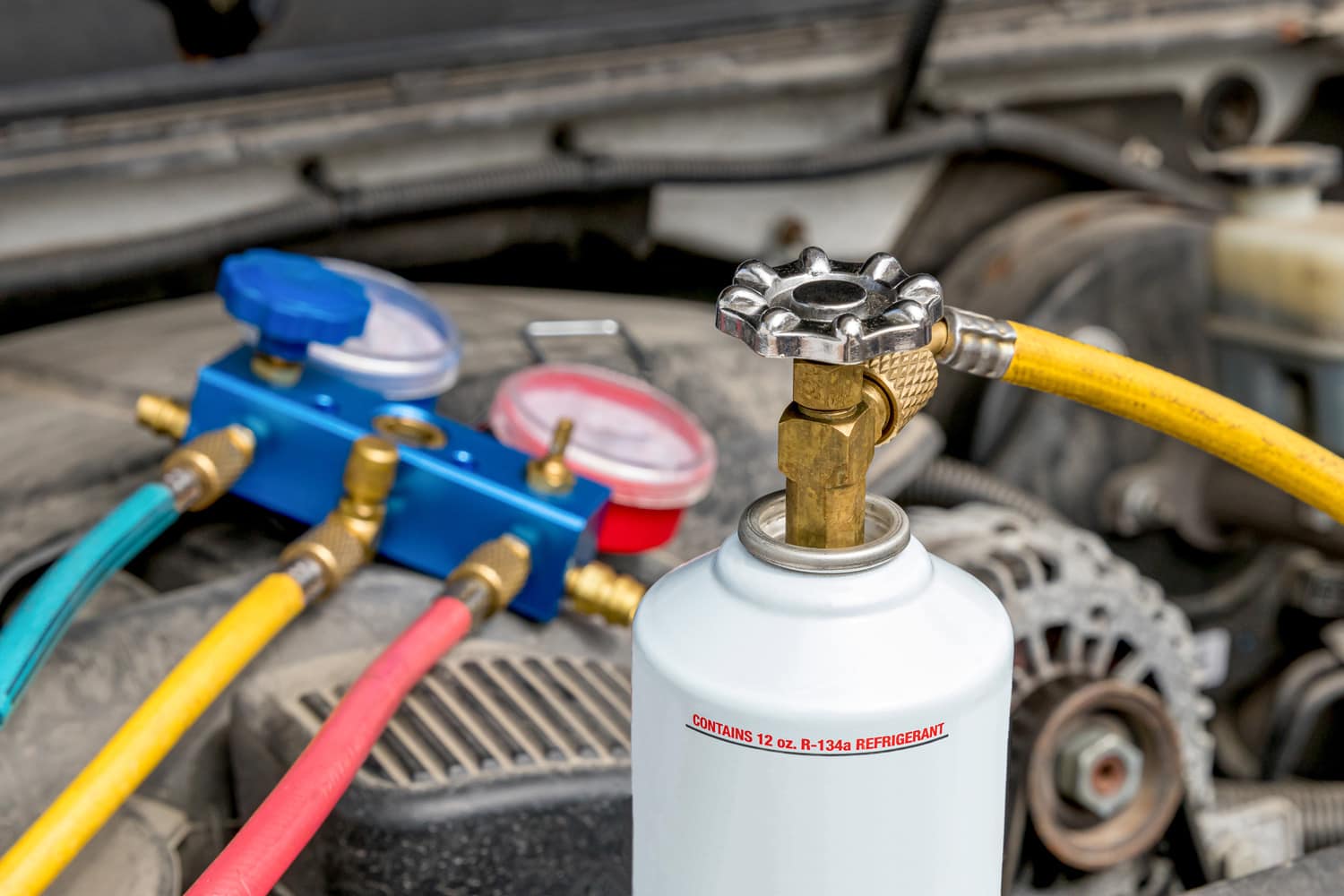
An AC manifold gauge is a device that allows you to fully control how much freon is added to your AC and prevent any moisture from entering the system.
To use an AC manifold gauge, take its blue hose and attach it to your AC's low-side service port. Next, take the manifold gauge's red hose and attach it to your AC's high-side service port. After the low and high-side service ports are connected, attach the yellow hose to a vacuum pump and remove the air from the system.
Removing the air from the system is vital to ensure there isn't any moisture trapped in the system.
Now take the yellow hose and attach it to a canister of refrigerant. Check which kind of refrigerant your vehicle takes, but most modern vehicle air conditioners take 134a refrigerant. Place the canister of refrigerant on a reverse scale to measure how much refrigerant you have added to the system.
Next, turn on your vehicle and set the AC to full blast. Now open the valve on the AC manifold gauge that leads to the low-side service port until you have added the recommended amount of refrigerant for your vehicle.
If you aren't sure what the recommended amount of refrigerant is for your vehicle, you can find it either in your vehicle's service manual or online.
Once you have added the correct amount of refrigerant, turn off your engine and disconnect the hoses. Your AC should now work correctly. If you want to purchase an AC manifold gauge, here are two of the best available on Amazon.
Xtremepower AC Manifold Gauge
You can find this product here on Amazon.
Orion AC Manifold Gauge
You can find this product here on Amazon.
How Do You Make Your Car's Air Conditioner Blow Harder?
If you have turned on your AC and it only blows weakly, no matter how high you turn up the fan, there may be an issue with your blower motor resistor. The blower motor resistor adjusts the signal to your AC's blower motor to adjust wind speed.
The blower motor resistor is usually under the dash on the passenger's side, but you can check for its location if your vehicle's service manual. You should see an access panel held together by two screws. Unscrew the access panel to reach the blower motor resistor.
Slide the blower motor resistor out and disconnect it from its wiring. Now take a new blower motor resistor and plug in the wires from the old resistor. Once the new blower motor resistor is connected, slide it into its slot and screw it into place.
Now, try turning on your AC and check to see if you can increase the speed of your AC. You will know you are successful if you can turn up the speed of your AC.
Why Won't My Car's AC Blow Air?
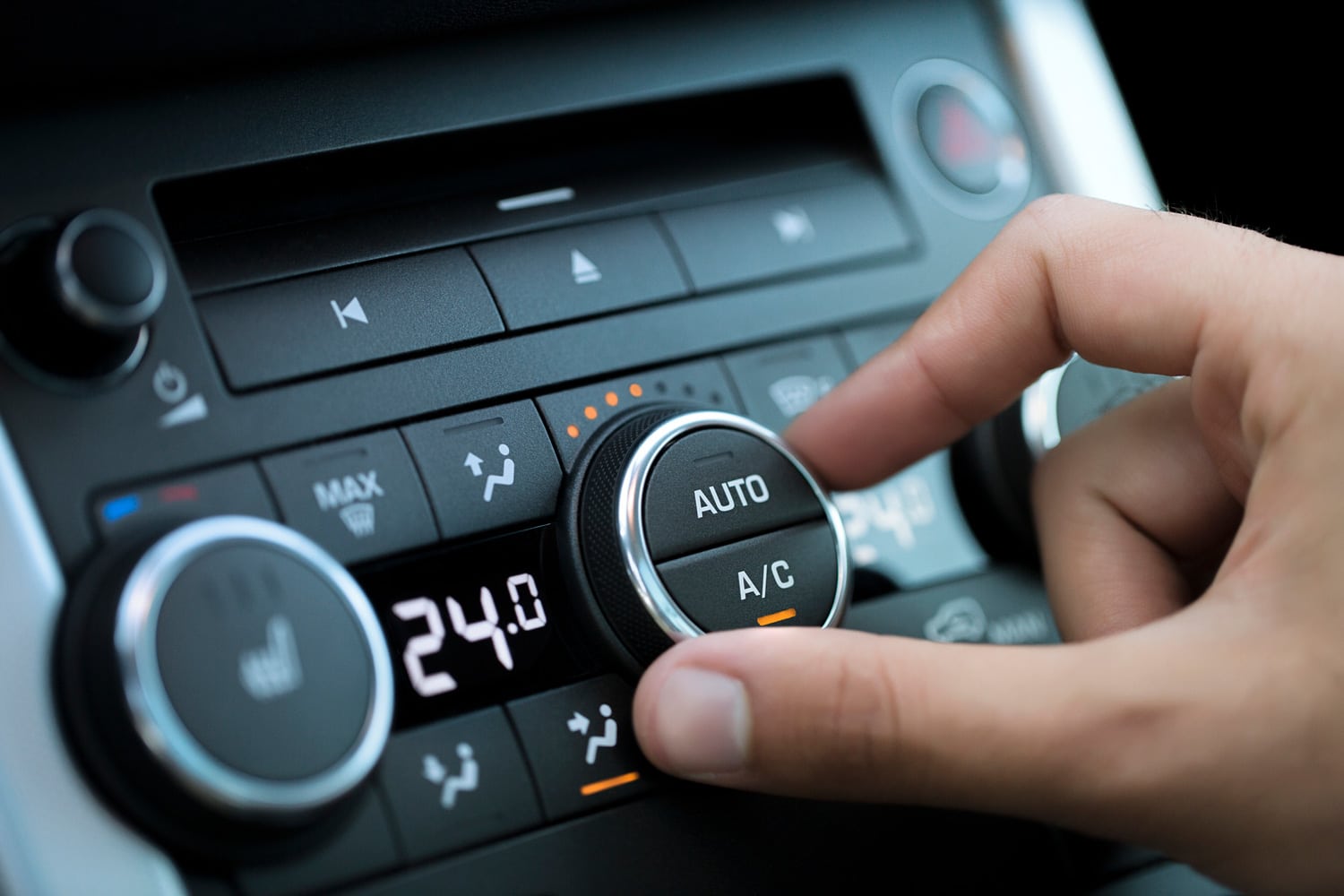
If when you turn on your AC, it doesn't blow any air, there are a few likely causes. Let's look at the most common issues and how to remedy them.
Clogged Air Filter
A clogged air filter is the most common cause of an AC that won't blow air. To fix a clogged air filter, remove your vehicle's air filter and clean it with a general-purpose cleaner. Next, rinse any excess cleaner with water and allow the filter to dry.
Once the filter is dry, reinsert it into your vehicle and check if your AC now blows air. You may want to check for a blown fuse if that doesn't work.
Blown Fuse
If your AC has blown a fuse, it won't signal the blower motor to blow air. Locate the fuse for your AC's blower motor to check if it's blown. You can locate it in your vehicle's service manual if you are unsure where this is.
Now remove the fuse and check if the fuse's filament connects across the fuse. If there is a break in the filament, the fuse has blown and needs to be replaced. Replace the fuse with a new fuse and check if your AC now blows air.
If your AC now blows air, then you know you have fixed the problem. You likely have a broken blower motor if your AC still won't blow air.
Broken Blower Motor
If your blower motor has failed, replacing the fuse and clearing the air filter won't return air flow to your AC. Unless you have experience as a mechanic, you should take your vehicle into a shop to have the blower motor replaced.
With a new blower motor, your AC will be working like new again.
Final Thoughts
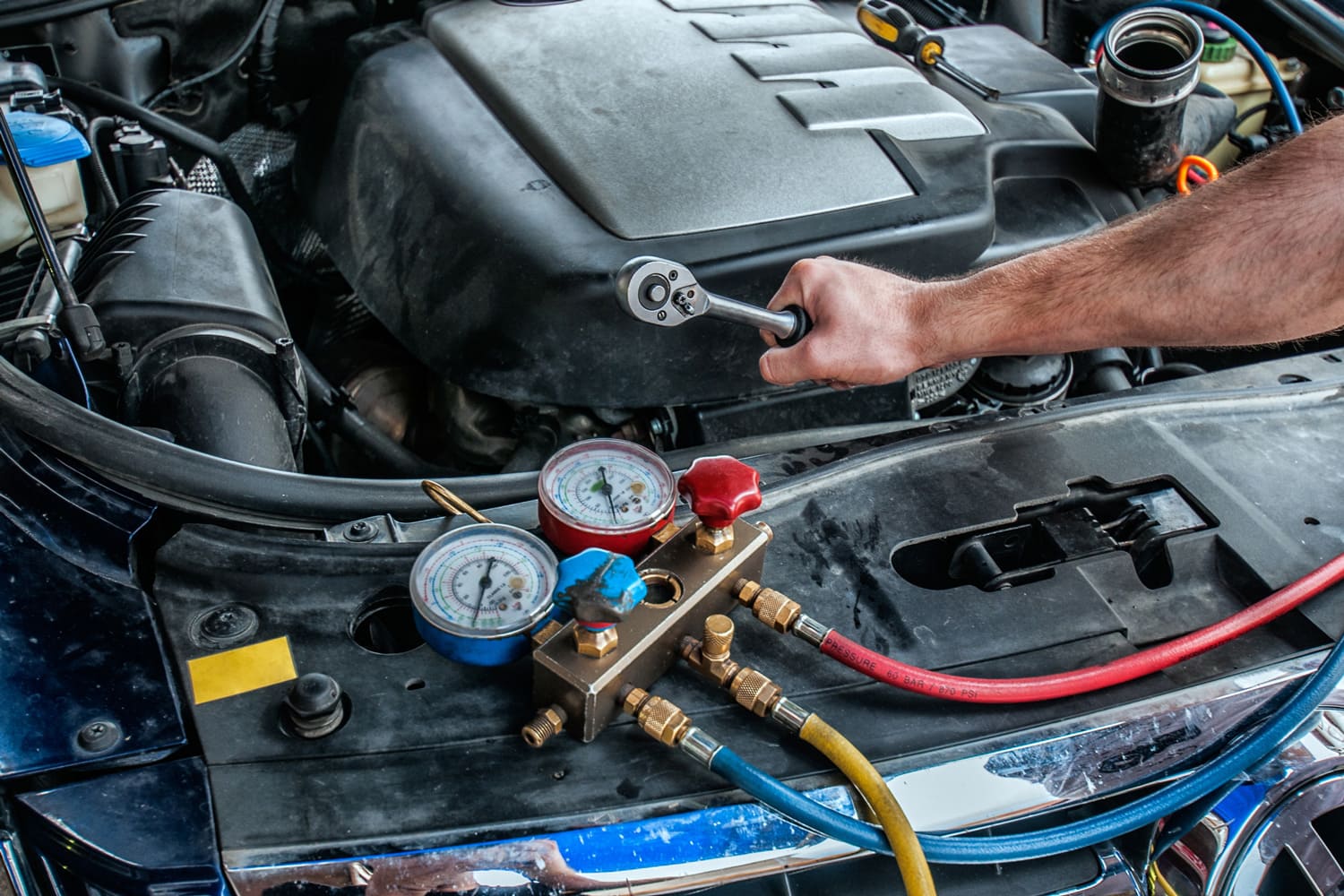
This article taught us how to remove freon from your car's AC without injuring yourself. We also learned how to add freon to your car's AC to improve air conditioning.
Remember, while a can of refrigerant can be an easy way to add freon to your AC, it's best done with an AC manifold gauge.
We hope you enjoyed this article. If you want to learn more, check out some of these other posts.




